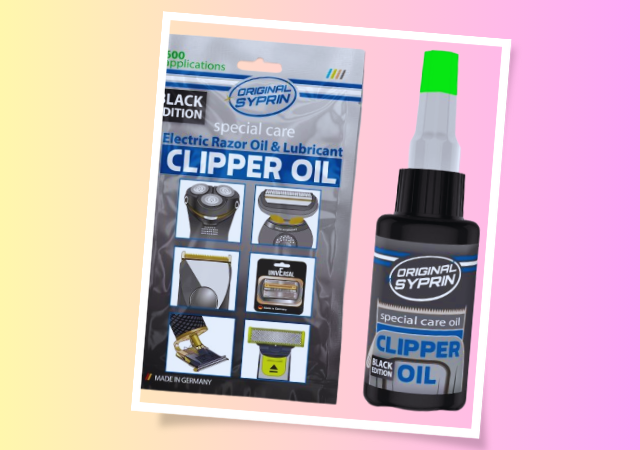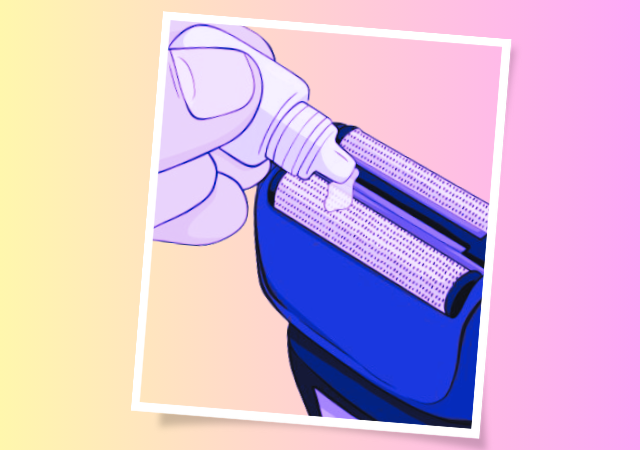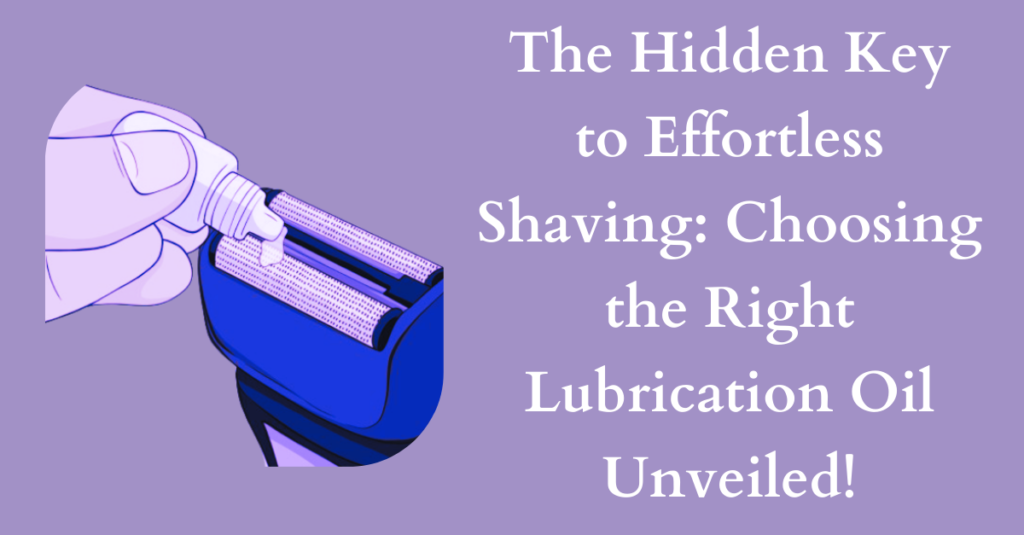The Hidden Key to Effortless Shaving: Choosing the Right Lubrication Oil Unveiled!
Introduction
I. The Importance of Lubrication in Shaving:
To truly appreciate the significance of lubrication, one must understand its role in the shaving process. Lubrication acts as a protective barrier, reducing friction between the razor’s blades and the skin. This not only enhances the razor’s glide but also minimizes irritation and the risk of nicks or cuts. Proper lubrication ensures a smoother shave, making it a crucial element in achieving a comfortable and flawless grooming routine.
II. Types of Lubricants for Electric Razors:
Before delving into the nuances of choosing the right oil, it’s essential to explore the different types of lubricants available for electric razors. Three main categories include oil-based lubricants, dry lubricants, and silicone-based lubricants. Each type has its own set of characteristics and benefits, influencing the overall performance of your electric razor.
- Oil-Based Lubricants: Oil-based lubricants are traditional choices known for their effectiveness in reducing friction. Commonly derived from light mineral oil or synthetic oils, they provide excellent lubrication, ensuring a smooth glide during shaving. Users often appreciate the added nourishment these oils offer to the razor’s moving parts, contributing to prolonged durability and performance.
- Dry Lubricants: Dry lubricants, typically in the form of powders or sprays, have gained popularity for their ability to minimize residue and stickiness. While they may not provide the same level of nourishment as oil-based counterparts, dry lubricants excel in preventing gunk buildup on razor blades, leading to a cleaner and more efficient shaving experience.
- Silicone-Based Lubricants: Silicone-based lubricants offer a unique blend of lubrication and protection. These lubricants create a thin, water-resistant barrier on the razor’s components, guarding against moisture and reducing the likelihood of rust or corrosion. Silicone-based options are known for their long-lasting effects and versatility in various environmental conditions.
III. Factors to Consider When Choosing Lubrication Oil:

Selecting the right lubrication oil for your electric razor involves considering several factors to ensure optimal performance and longevity. These factors include the razor manufacturer’s recommendations, the specific model’s specifications, environmental conditions, and personal usage patterns.
- Razor Manufacturer Recommendations: Always start by consulting the manufacturer’s guidelines regarding lubrication. Manufacturers often provide specific recommendations on the type of oil suitable for their razors, helping users make informed choices that align with the device’s design and engineering.
- Razor Model Specifications: Different razor models may have varying requirements when it comes to lubrication. Take note of any specifications or special considerations outlined in the user manual. Some razors may perform optimally with specific oil viscosities or formulations, ensuring compatibility with the intricate components of the device.
- Environmental Factors: Consider the environmental conditions in which you typically use your electric razor. Factors such as humidity and temperature can influence the effectiveness of lubrication oils. For instance, silicone-based lubricants may offer superior protection in humid environments, while dry lubricants may be more suitable for drier conditions.
- Personal Usage Patterns: Your personal grooming habits play a crucial role in determining the frequency and type of lubrication required. If you shave daily, a lighter oil with quick application may be preferable. However, if you shave less frequently, a more substantial, long-lasting lubricant may be suitable to protect the razor during periods of inactivity.
IV. Types of Oils for Electric Razors:
Now that we’ve covered the factors influencing your choice, let’s explore the specific types of oils commonly used for electric razor lubrication. Each type has its unique characteristics, and understanding their properties can aid in making an informed decision.
- Light Mineral Oil: Light mineral oil is a popular choice for electric razor lubrication due to its excellent viscosity and lubricating properties. It provides a smooth glide during shaving and helps protect the razor’s moving parts. Moreover, light mineral oil is known for its minimal residue, making it easy to clean and maintain.
- Synthetic Lubricating Oils: Synthetic lubricating oils are engineered to provide enhanced performance and protection. These oils often have additives that contribute to the reduction of friction and wear on the razor’s components. Synthetic options are prized for their stability and resistance to temperature variations, ensuring consistent lubrication in various conditions.
- Food-Grade Oils: Some users prefer food-grade oils for their electric razors, considering them safe and non-toxic. These oils, often derived from natural sources, can offer effective lubrication while minimizing the risk of skin irritation. However, it’s crucial to ensure that the chosen food-grade oil aligns with the razor manufacturer’s recommendations.
V. Compatibility with Razor Components:
Choosing the right lubrication oil goes beyond its basic properties; it involves understanding how the oil interacts with the razor’s components. Consider its impact on the motor performance, cutting blades, and other moving parts.
- Impact on Motor Performance: Lubrication directly affects the motor’s efficiency and longevity. Using the wrong oil may cause the motor to work harder, potentially leading to overheating and premature wear. It’s essential to choose an oil that complements the razor’s motor specifications, maintaining optimal performance over time.
- Effect on Cutting Blades: The cutting blades are the heart of any razor, and the right lubrication is crucial for their functionality. Inadequate lubrication can result in increased friction, leading to dull blades and a less precise shave. Conversely, over-lubrication may cause gunk buildup, affecting the blades’ cutting ability. Choose an oil that strikes the right balance for blade maintenance.
- Interaction with Other Moving Parts: Electric razors consist of various moving parts beyond the motor and blades. These include pivoting mechanisms, gears, and springs. The chosen lubrication oil should ensure smooth movement across all components, preventing unnecessary wear and tear. Consider the overall design of the razor and select an oil that caters to its specific engineering requirements.
VI. Application Techniques:

With the right oil selected, mastering the application process is crucial for optimal results. Follow these step-by-step guidelines to ensure effective lubrication and extend the lifespan of your electric razor.
- Clean the Razor: Before applying lubrication, ensure the razor is clean and free of any debris or hair. Use a brush or compressed air to remove any buildup around the blades and moving parts. Cleaning the razor beforehand prevents contamination and allows the lubrication oil to penetrate effectively.
- Apply a Small Amount of Oil: Use a dropper or applicator to apply a small amount of oil to the designated areas. Be mindful not to over-apply, as excess oil can lead to gunk buildup and may not enhance performance. Start with a conservative amount and observe the razor’s movement during the initial strokes.
- Turn On the Razor: Once the oil is applied, turn on the razor and let it run for a few seconds. This allows the oil to distribute evenly across the moving parts. Pay attention to any unusual sounds or resistance, as they may indicate issues with the lubrication or the razor itself.
- Wipe Excess Oil: After running the razor, use a clean cloth or tissue to wipe away any excess oil. Leaving excess oil on the razor can attract dirt and impede performance. Ensure that the razor’s surface is clean and dry before storing or using it.
VII. Maintaining Razor Hygiene:
Achieving a flawless shave extends beyond lubrication; maintaining razor hygiene is equally crucial. Follow these practices to keep your razor in top condition and prevent contamination.
- Importance of Cleaning Before Lubrication: Always clean your razor thoroughly before applying lubrication. Lingering debris or hair can interfere with the lubrication process and compromise the razor’s performance. A clean razor ensures that the lubrication oil reaches all the necessary components for optimal effectiveness.
- Choosing the Right Cleaning Solutions: Selecting the appropriate cleaning solutions is vital for razor hygiene. Avoid harsh chemicals that may damage the razor’s materials. Opt for mild, non-abrasive cleaners or those recommended by the razor manufacturer. Regular cleaning not only enhances performance but also prevents the accumulation of bacteria and germs.
- Proper Storage to Prevent Contamination: Store your electric razor in a clean, dry environment to prevent contamination. Avoid leaving it in damp or humid areas, as moisture can lead to rust or corrosion. Investing in a protective case or cover can further shield the razor from dust and debris, maintaining its hygiene between uses.
VIII. Troubleshooting Lubrication Issues:
Even with careful maintenance, occasional lubrication issues may arise. Recognizing signs of inadequate lubrication, addressing over-lubrication problems, and dealing with compatibility issues are essential troubleshooting steps.
- Identifying Signs of Inadequate Lubrication: If your razor starts exhibiting unusual sounds, increased friction, or diminished performance, it may be a sign of inadequate lubrication. Regularly inspect the razor’s moving parts for wear or resistance. If issues persist, consider reapplying lubrication or consulting the manufacturer for guidance.
- Addressing Over-Lubrication Problems: Over-lubrication can lead to gunk buildup, affecting the razor’s functionality. If you notice excessive oil residue or sticky blades, wipe away the excess oil using a clean cloth. Run the razor for a short period to allow the excess oil to disperse. Adjust your lubrication routine by applying smaller amounts to prevent future over-lubrication.
- Dealing with Compatibility Issues Between Oil and Razor Components: If you experience compatibility issues between the chosen oil and the razor’s components, consider switching to an alternative lubrication option. Consult the manufacturer’s guidelines or customer support for recommended oils that align with your razor’s specific engineering.
IX. Frequently Asked Questions:
Addressing common queries about electric razor lubrication ensures users have a comprehensive understanding of this essential grooming practice. Here are some frequently asked questions along with expert answers and recommendations.
1. How often should I lubricate my electric razor?
Lubrication frequency depends on personal usage patterns. For daily shavers, lubricate your razor at least once a week. Those who shave less frequently may opt for monthly lubrication. Always refer to the manufacturer’s recommendations for guidance.
2. Can I use any oil for electric razor lubrication?
While some oils may work, it’s crucial to use those recommended by the razor manufacturer. The wrong oil can lead to performance issues and may not provide adequate protection for the razor’s components.
3. Is it necessary to clean the razor before lubrication?
Yes, cleaning the razor before lubrication is essential to ensure the oil reaches all the necessary components. Debris or hair buildup can hinder the lubrication process and compromise performance.
4. Can I use food-grade oils for electric razor lubrication?
While some users prefer food-grade oils, it’s important to ensure they align with the manufacturer’s recommendations. Always choose oils that provide effective lubrication without compromising the razor’s performance.
Conclusion (The Hidden Key to Effortless Shaving: Choosing the Right Lubrication Oil Unveiled!)
In conclusion, “The Hidden Key to Effortless Shaving: Choosing the Right Lubrication Oil Unveiled!” serves as a comprehensive guide to transforming your grooming routine. Understanding the importance of lubrication, exploring the types of oils available, and considering factors influencing your choice are crucial steps in achieving a flawless shave.
Choosing the right lubrication oil is not just about enhancing the razor’s glide but also about ensuring its longevity and optimal performance. By following the recommended application techniques, maintaining razor hygiene, and troubleshooting common issues, you can unlock the hidden key to a shaving experience that goes beyond the mundane—a daily ritual that rejuvenates your skin and elevates your overall grooming satisfaction. Master the art of lubrication, and say goodbye to razor hassles forever!

My name is Rohit Vagh and I’m a content writer specializing in fashion and lifestyle. I have three years of experience in this field and have written various articles. My writing style is creative and engaging, and I strive to create content that resonates with my readers. I have a deep passion for fashion and am constantly researching the latest trends and styles to make sure my readers are up to date. I’m excited to continue my career in blogging, and I’m always looking for new opportunities in the fashion and lifestyle space.





